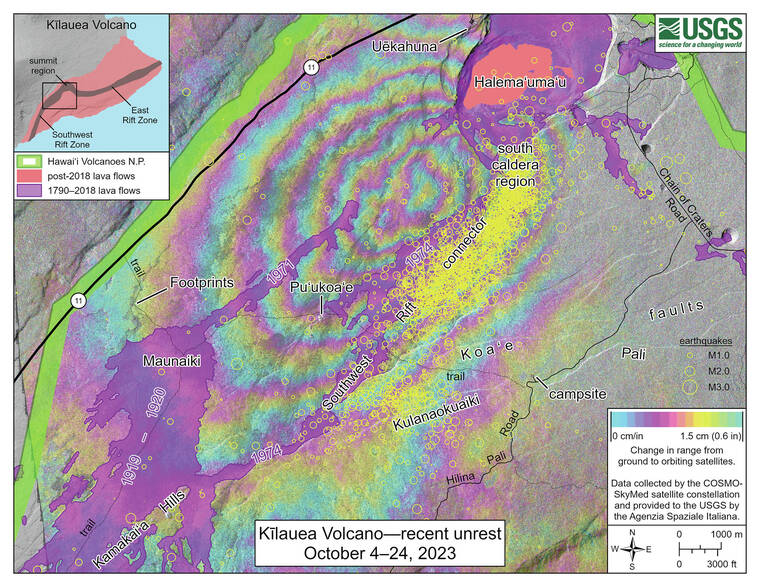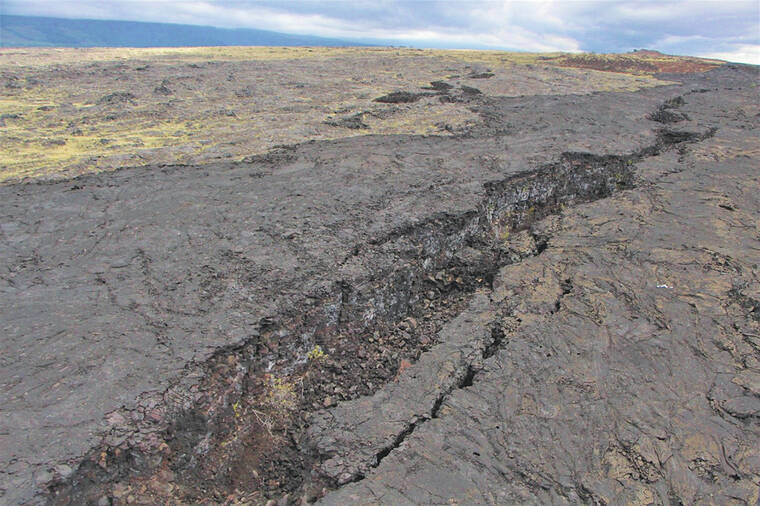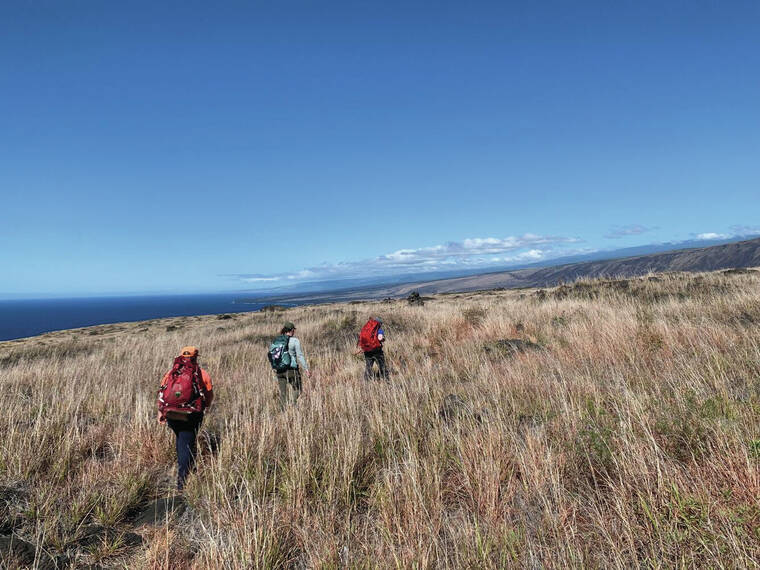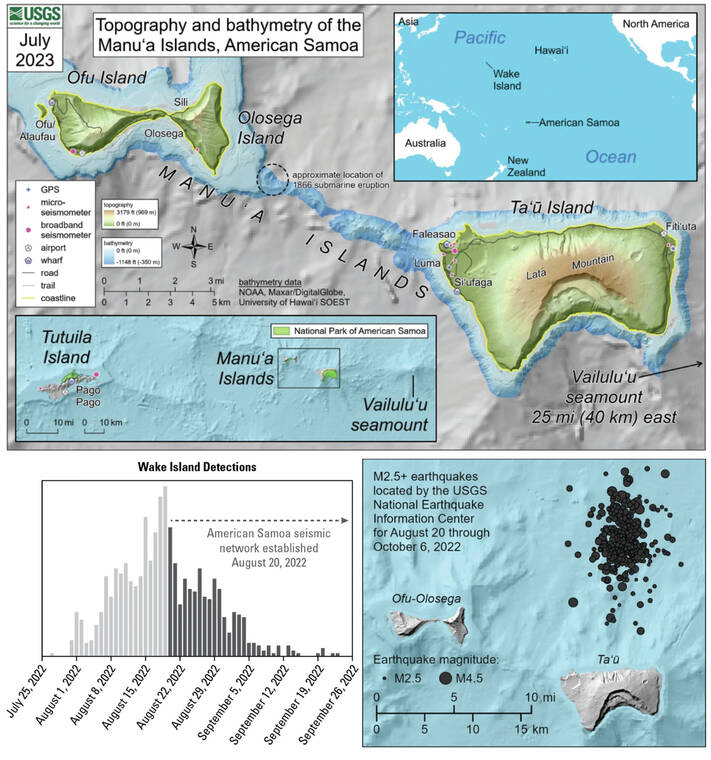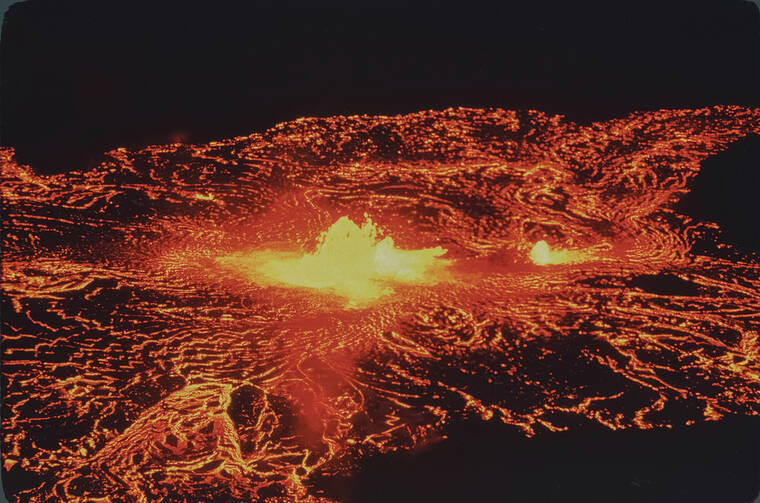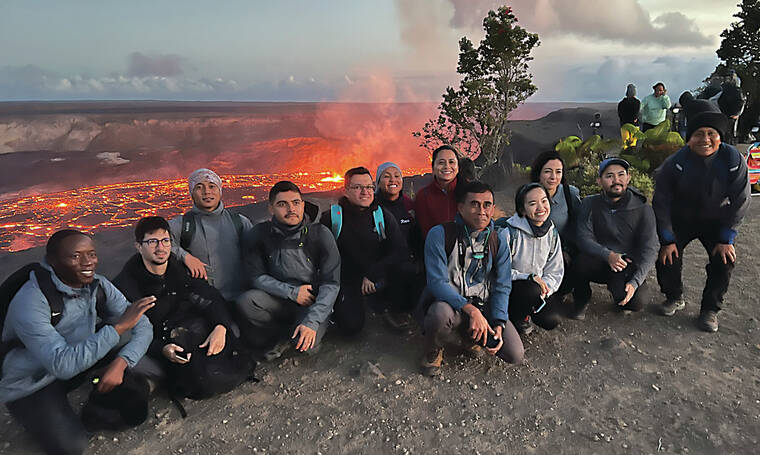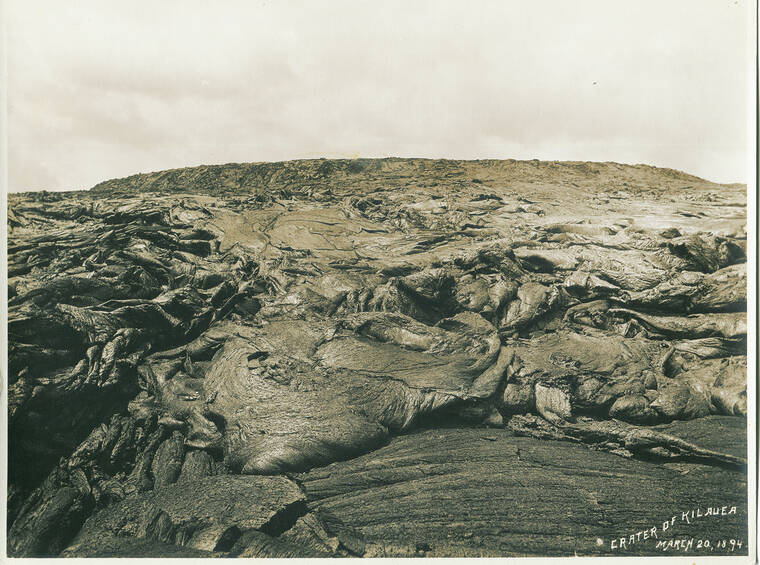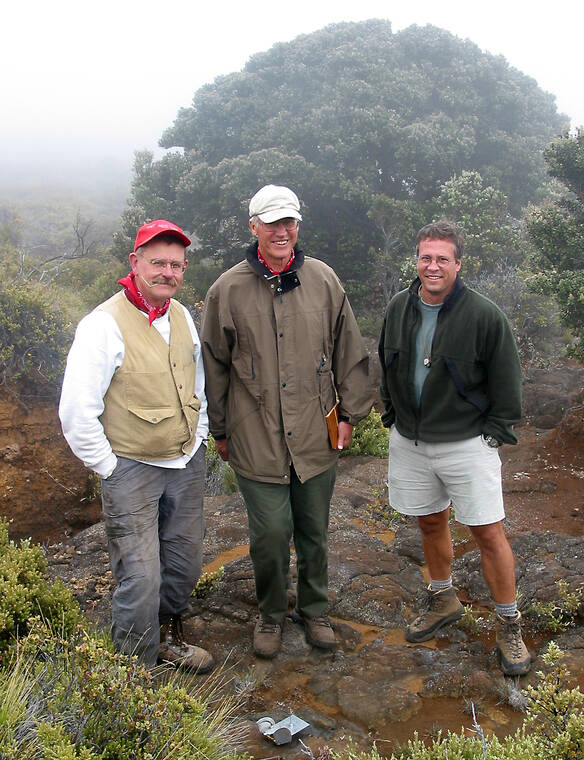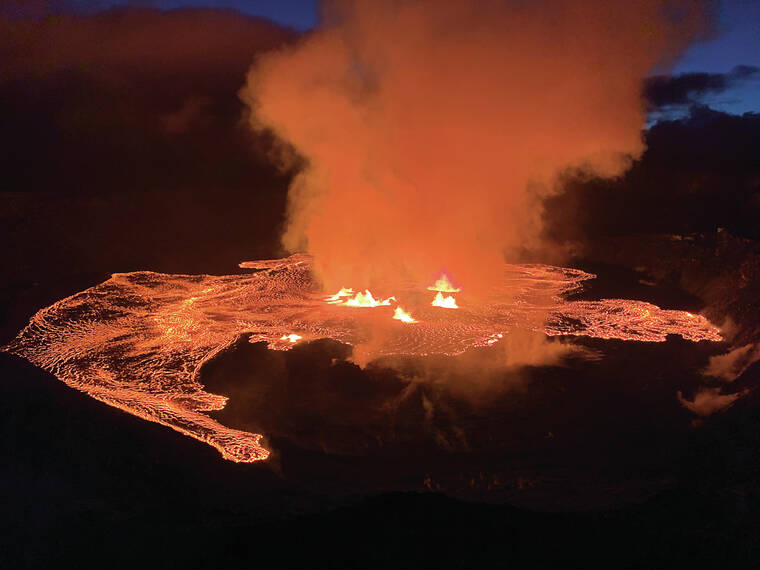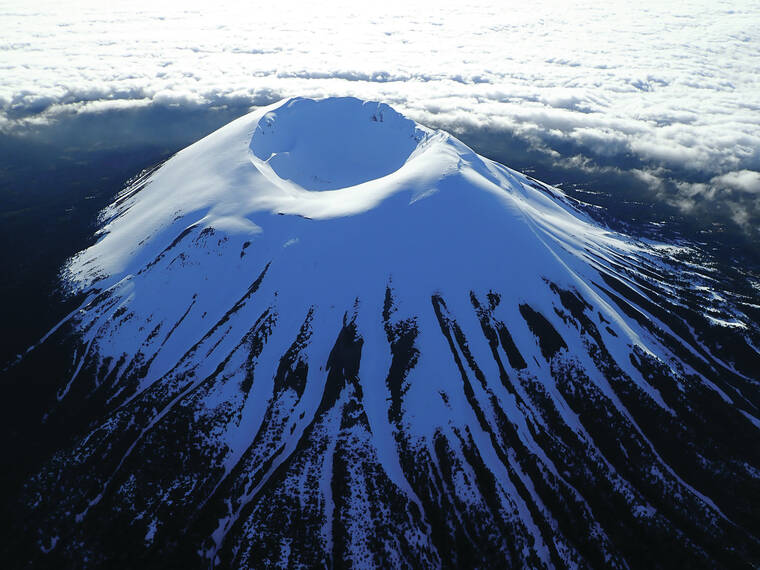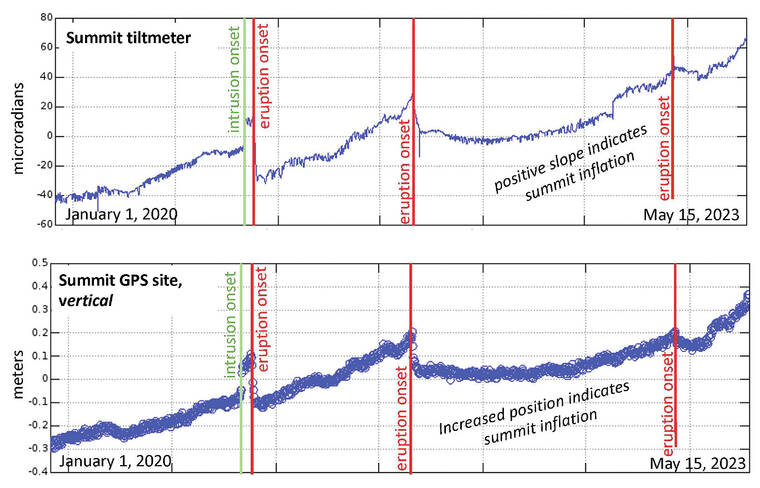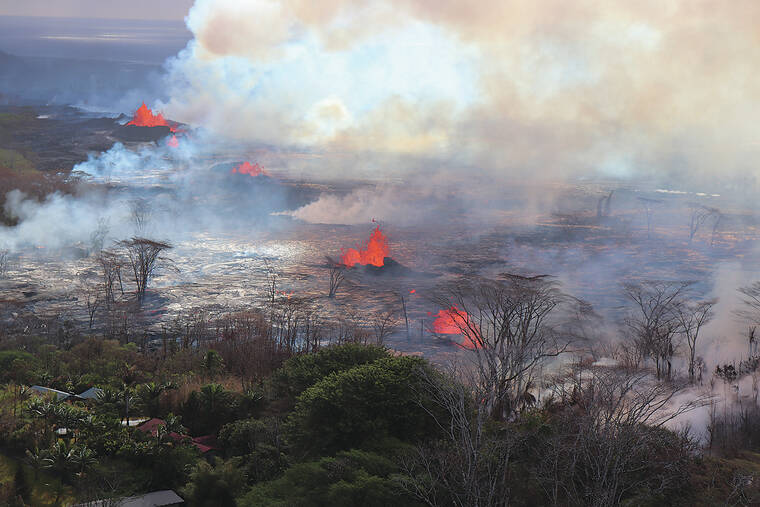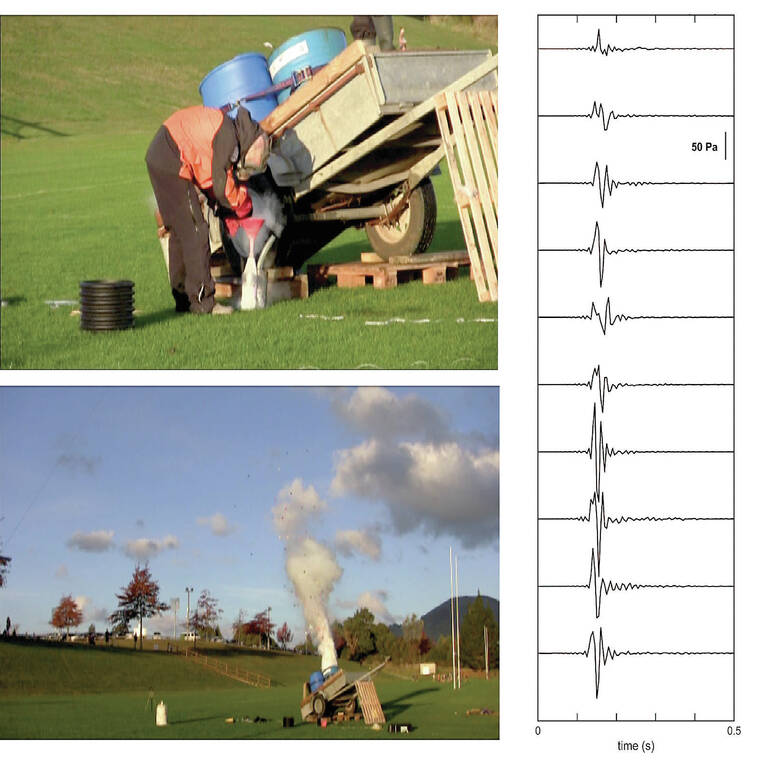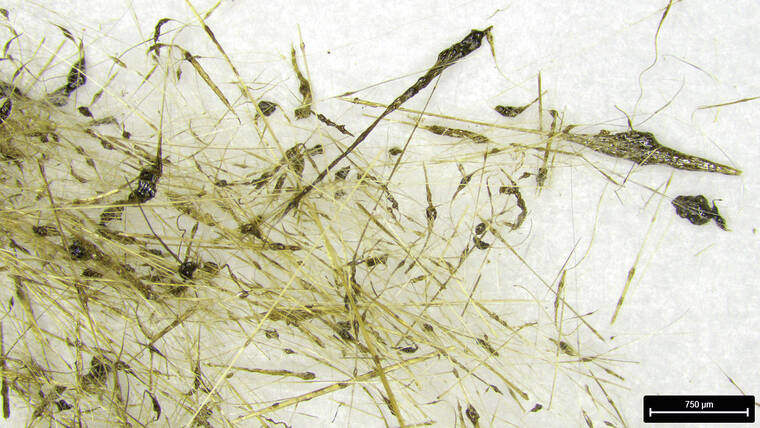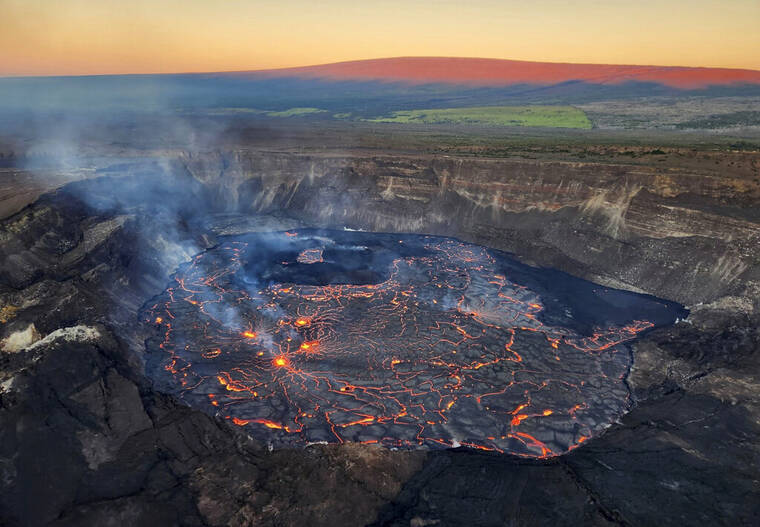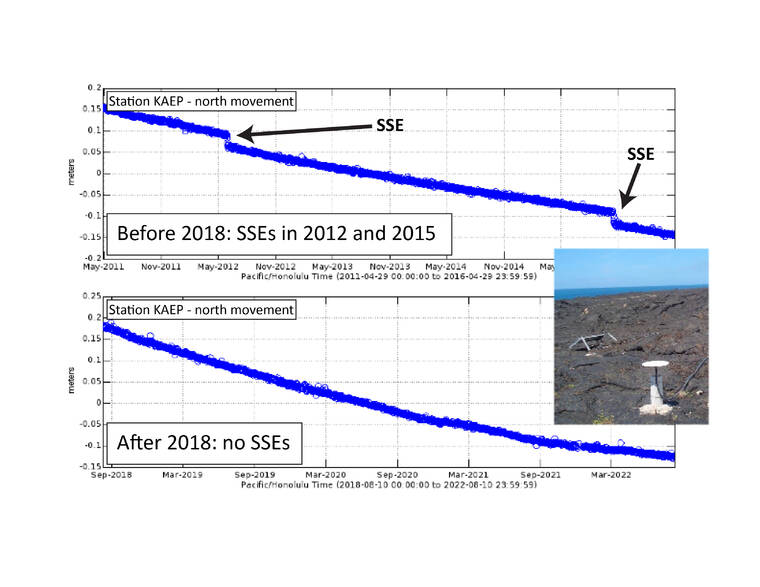Volcano Watch: Unrest continues at Kilauea summit
The most recent eruption at Kilauea’s summit began on Sunday, Sept. 10. Following weeks of heightened unrest, fissures opened on the Halema’uma’u crater floor and to the east on the “down dropped block,” a remnant of the older caldera floor that collapsed in 2018.
Volcano Watch: Using remote acoustic monitoring to distinguish volcanic styles
Volcanic eruptive activity may take many forms, from gently erupting basaltic fissures in Hawaii to intense explosive eruptions like those of Mount St. Helens. Volcano observatory scientists are keenly interested in understanding such events and their implications for hazards. Two types of eruptions have been the focus of recent studies at Stromboli in Italy.
Volcano Watch: The most unusual Kilauea eruption…maybe 1823?
Last month a “Volcano Watch” article discussed the bicentennial of the first visit of westerners to Kilauea caldera, led by English missionary William Ellis, in 1823. Ellis did not just visit the summit region; he had approached from Ka‘u, traveling along what eventually became known as Kilauea’s Southwest Rift Zone (SWRZ). Ellis first witnessed evidence of Kilauea’s restlessness there, in the form of a vast, 4.8-square-mile (12.5 square-kilometer) lava flow that had erupted just a short time before.
Searching for tephra from one of Kīlauea’s largest explosive eruptions
Understanding the eruptive history of volcanoes in Hawaii requires a tremendous amount of time and effort examining deposits. Typically, older eruptions have less material exposed at the surface because younger eruptions bury them, or wind and rain erode them. Such is the case for one of Kilauea’s largest explosive eruptions, which is not exposed near its source at the summit and must be studied further afield.
Volcano Watch: USGS Hawaiian Volcano Observatory staff return to American Samoa
It’s been one year since Ta‘u volcano in American Samoa started shaking residents of the Manu‘a Islands (Ofu-Olosega and Ta‘u Islands). Fortunately, there have been no additional earthquakes since the volcanic unrest ended last October. This month, USGS staff will be returning to American Samoa to do outreach, strengthen relationships with partners, and maintain the monitoring network.
Volcano Watch: Halema‘uma‘u’s 1967-68 eruption: another crater-filler
Kilauea’s activity from 2018 until now has been compared to cycles of summit collapse and refilling prior to 1924. However, Kilauea also exhibited similar behavior during the 1967-68 Halema‘uma‘u eruption.
Volcano Watch: International volcano scientist training course returns to Hawaii
The Center for the Study of Active Volcanoes (CSAV) is holding its annual summer International Training Course in Volcano Hazards Monitoring. This year is the 30th course since its inception in 1990 after a three-year hiatus due to the COVID pandemic. The training course is a product of the partnership between the University of Hawaii at Hilo, the University of Hawaii at Manoa, the USGS Hawaiian Volcano Observatory (HVO), and the USGS Volcano Disaster Assistance Program (VDAP).
Volcano Watch: Tracking down Mauna Loa’s carbon dioxide
When lava poured out over the floor of Mokuaweoweo, Mauna Loa’s summit caldera, late on the night of November 27, 2022, it was still many hours away from infrastructure. Or most infrastructure.
Volcano Watch: What is the highest elevation reached by Halemaʻumaʻu lava?
The 2018 collapse of southern Kaluapele (Kilauea caldera) left a pit whose lowest point was about 500 m (1,640 ft) above sea level (asl). Since 2020, that pit has filled to a little over 900 m (2,950 ft) asl and one might wonder how high the lava level could go. We can’t answer that question but we can get an idea by looking to Kilauea’s past.
Unveiling Earth’s magnetic secrets: paleomagnetism and its geological applications
When we think about the Earth’s magnetic field, we often associate it with compasses and navigation. However, did you know that our planet’s magnetic field has a rich history of change, including switching of polarity, that spans millions of years?
Volcano Watch: Reflections on recent eruptions
Kilauea volcano began erupting within Halema‘uma‘u crater at the summit during the early morning of June 7. The eruption marks another in a series of recent eruptions that the Hawaiian Volcano Observatory has been able to successfully forecast!
Volcano Watch: Volcano monitoring from space: InSAR time series success in Alaska
In a recent “Volcano Watch” article, we learned about a remote sensing technique known as InSAR. This method of using satellite radar signals to detect changes to the surface of the Earth has been very beneficial for the monitoring of active volcanoes, especially in remote locations where it is difficult to install ground-based geophysical sensors. One such place where InSAR recently proved instrumental in detecting deformation of a volcano previously considered inactive was in Southeast Alaska.
Volcano Watch: Ups and downs at Kilauea summit: Quiescence, eruptions, and constant change
May 3 marked the fifth anniversary of the start of Kilauea’s historic 2018 eruption that resulted in extensive lava flows from the East Rift Zone and major collapses of the summit caldera floor. Since that 2018 activity, Kilauea has experienced nearly constant change with distinct episodes of calm, unrest, eruptions, and everything in between.
Volcano Watch: Five years flow by: Reflections on the destructive 2018 eruption of Kilauea
Five years ago, volcanic activity at Kilauea dramatically changed when magma intruded into the lower East Rift Zone (LERZ). What happened at Kilauea in 2018? What have been the resulting learning opportunities?
Today’s family of 5 USGS volcano observatories began with HVO over 111 years ago
HVO staff has grown from one geologist, Thomas A. Jaggar, in 1912 to more than 30 people today. This team includes scientists and specialists in geology, geophysics, geochemistry, field engineering and telemetry, information technology, administration, public communications and more. Hundreds of volunteers, students, and visiting scientists—many from the University of Hawai’i—have also provided valuable assistance to HVO through the years.
Volcano Watch: Using water cannon experiments to improve understanding of volcanic blasts
The 1980 Mount St. Helens eruption in Washington State illustrated the hazards and impacts of lateral (ground-hugging) volcanic blasts on natural landscapes and human infrastructure. The eruption devastated hundreds of square miles and killed 57 people. In the more than forty years since, several additional laterally directed explosive eruptions have occurred world-wide.
Volcano Watch: Pele’s hairs: a beautiful hazard on Hawaii Island
Shiny and elusive, featherlight and golden-brown. If poets were to write about rocks, I’m sure they would sing their praises of Pele’s hairs. Don’t be fooled, though, because Pele’s hairs are strands of volcanic glass, and they can pose a serious hazard.
Eruption at Hawaii’s Kilauea volcano stops after 61 days
HONOLULU (AP) — The latest eruption at Kilauea’s summit on Hawaii’s has paused after 61 days of volcanic activity.
Volcano Watch: The missing slow slip events on Kilauea’s south flank
Over the past two decades, both scientists and members of the public have anticipated the occurrence of slow slip events (SSEs) on Kilauea’s south flank. These events are recorded by the Hawaiian Volcano Observatory’s (HVO) continuous GPS network, which show as much as 2 cm (0.75 inches) of increased seaward motion of the flank over 2-3 days—equivalent to about a M6 earthquake.
Volcano Watch: Comparing crises — Mauna Loa 1984 vs. Mauna Loa 2022
Despite the development of new volcano monitoring techniques, decades between the eruptions meant there were many uncertainties leading to the recent eruption. Did the unrest observed during the fall of 2022 mean an eruption would certainly occur? How soon would modern monitoring signals show signs of an imminent eruption?

